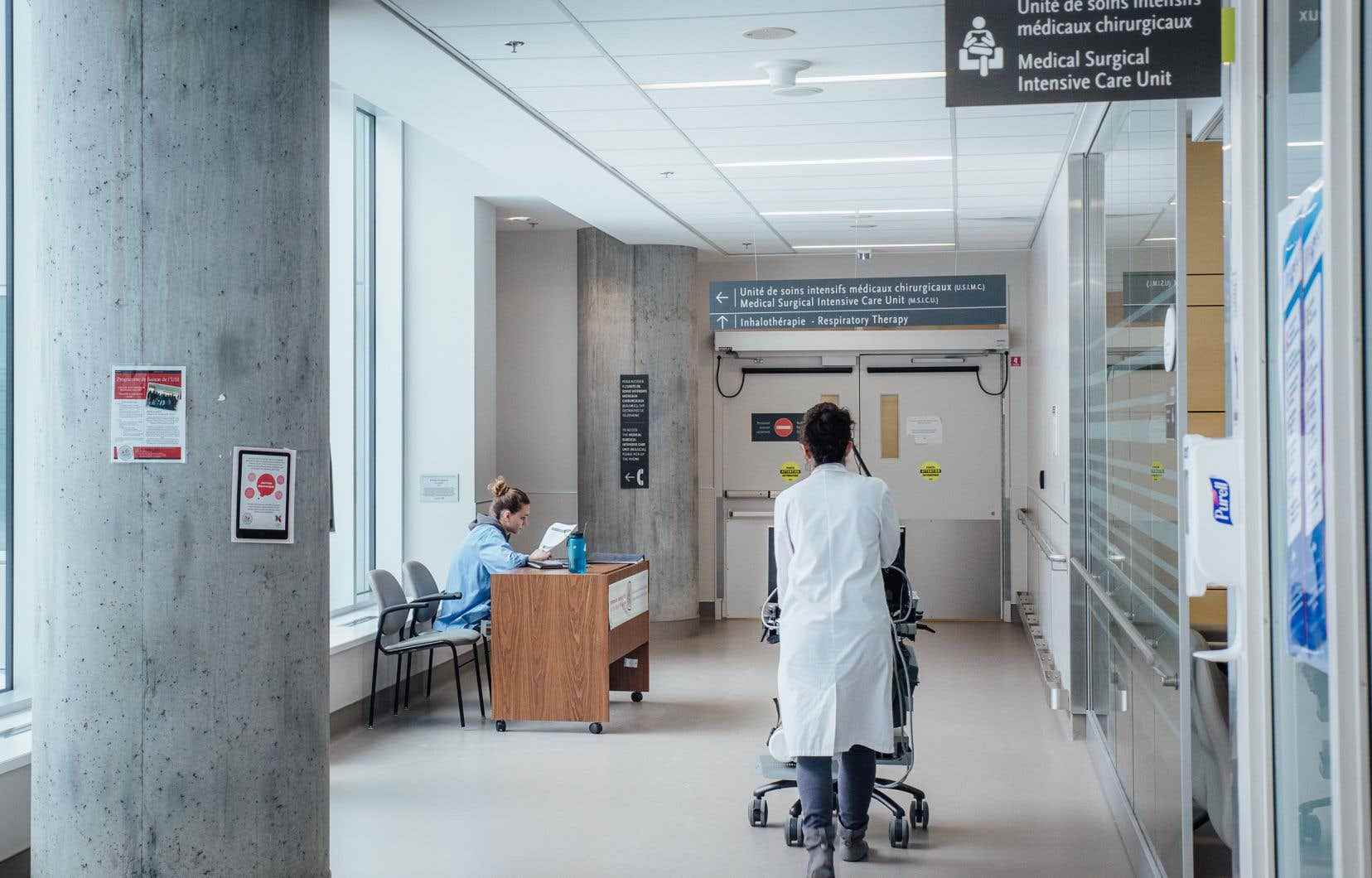The Ministère de la Santé et des Services sociaux (MSSS) wants to drastically reduce, in the greater Montreal area, the number of patients who do not require short-term care, but who remain in the hospital for lack of places in accommodation. Quebec aims for a 50% drop by November 5, learned The duty. The government is counting on caregivers in particular to reach this target.
The MSSS details its action plan in a 27-page document dated August 31, The duty got a copy. He reports an increase in the number of hospitalized patients waiting for a place in a CHSLD, an intermediate resource or a family-type resource. As of August 25, 18% of available beds in Montreal hospitals were occupied by users no longer requiring short-term care, indicates the MSSS. Of these, 38% were waiting for accommodation.
Remember that these patients “block” beds that could be occupied by patients in the emergency room or people who have just undergone surgery.
In its action plan, the MSSS sets three targets for health institutions in Montreal, the North Shore and the South Shore.
First, by October 8, a 25% reduction in the number of hospitalized patients awaiting accommodation compared to the period from July 27 to August 25. Then, by November 5, a decrease of 50% compared to this same reference period. As of December 3, the MSSS would like a maximum of 20% of users waiting for accommodation to occupy a short-term hospital bed.
To achieve these objectives, the MSSS cites as an example the strategies adopted by the CISSS de Lanaudière, which succeeded “in considerably reducing the number of users declared to be accommodated from the short-term” at the hospital “by taking a shift modifying considerably [ses] practice “.
In this region, patients who need to be admitted to accommodation wait for their place at home, and not at the hospital, indicates the CISSS. A team of managers is responsible for determining the resources they need.
“One of the strategies consists in making agreements with the caregivers to the effect that their loved one will be accommodated within 2-3 weeks, but that, in the meantime, their collaboration is required”, is it written in the document. When granting accommodation places, home users “presenting major risk factors” are given priority. “Several successes have been observed in this direction,” it says.
Ambitious targets
The reduction targets set by the MSSS appear “ambitious” in the eyes of the DD Chantal Vallée, head of the specialized medicine department at the CISSS de la Montérégie-Centre. “It will take front-line resources to be able to support these patients at home,” however, points out the internal medicine specialist, recalling that the health network is facing a shortage of personnel.
The DD Vallée emphasizes that she is not against the MSSS action plan, far from it. “I think it’s okay to have targets and to say that we have to send our patients home as much as possible. But this avenue is not possible for everyone, she notes. “Sometimes, when it’s the fourth hospitalization in the same year, accommodation is like the end of the race necessary for the safety and health of the patient. »
The Dr Hoang Duong, president of the Association of specialists in internal medicine of Quebec, believes that it is “probably better” that patients wait for their place of accommodation at home rather than in a hospital center. “But the hospital still has to respect its commitments, that is to say that if it promises patients, and especially their caregivers, increased support for home care, once at home, these patients benefit from this care,” says the doctor. Families are “often at their wit’s end,” he says.
The DD Sophie Zhang, co-president of the Community of Practice of Doctors in CHSLDs, hopes that the return home of “fragile” users waiting for CHSLDs will not be rushed. “It won’t help patients or the health care system if they end up in the emergency room afterwards,” she said.
According to her, it is “more realistic” to transfer home patients waiting for an intermediate or family-type resource than people who “rate for a CHSLD” and whose loss of autonomy is severe. Health establishments will also have to offer home services to families who will take care of their loved ones and not prolong the stay at home, she believes. “We should keep our promise [que l’hébergement va être disponible dans] two to three weeks and it doesn’t end up being double, triple that,” she says.
other tracks
In its action plan, the MSSS mentions other possible solutions, such as bringing hospitalized patients no longer requiring acute care together on the same site. It also asks health establishments to ensure “follow-up on the reopening” of closed accommodation beds. The MSSS counted 637 in Montreal at the end of August, due to work and lack of personnel.
According to the DD Zhang, reopening beds in CHSLDs is difficult in the current context. “For me, the most worrying aspect is that we no longer have the human resources that we had before and that even, in some places, it is even more critical than before the pandemic” , she says. “Depending on the centres, it can be up to 40% of vacancies that are unfilled. »
The duty contacted the MSSS for more information on this action plan. The ministry had not responded to our questions at the time of this writing.
